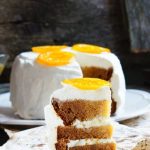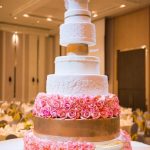Are you intrigued by the art of cake decorating? Have you ever wondered what is fondant cake decorating? Fondant cake decorating is a popular method of beautifying cakes with the use of a smooth, pliable icing that can be molded into various shapes and designs. In this article, we’ll explore the world of fondant cake decorating, from its history and benefits to essential tools, techniques, and creative ideas for your next masterpiece.
Fondant has been used in cake decorating for centuries, but its popularity has surged in recent years due to its versatility and professional-looking finish. From elegant wedding cakes to whimsical birthday creations, fondant offers endless possibilities for creating stunning edible works of art. Whether you’re a novice baker or an experienced pastry chef, mastering fondant cake decorating can elevate your confectionery skills to new heights.
In the following sections, we will delve into the history of fondant and how it came to be used in cake decorating, as well as the benefits and drawbacks of working with fondant. We will also cover different types of fondant available in the market and which one is best suited for decorating cakes.
Additionally, we will discuss the essential tools and equipment needed for successful fondant cake decorating and provide a step-by-step guide for those looking to try their hand at this creative form of edible art. So let’s jump into the sweet world of fondant cake decorating and unleash our creativity.
History of Fondant and Its Use in Cake Decorating
The history of fondant dates back to ancient civilizations, where it was used as a sweet confection. However, its use in cake decorating began to gain popularity in the 16th century in Europe.
Fondant was initially used to create intricate designs on cakes for royal and aristocratic events, as it provided a smooth and elegant finish to the confections. Over time, fondant cake decorating evolved and became more accessible to home bakers, leading to the development of various techniques and designs.
Benefits of using fondant in cake decorating include its pliability, which allows decorators to create smooth and flawless surfaces for their cakes. Fondant is also versatile and can be molded into various shapes and figures, making it perfect for creating intricate designs such as flowers, ribbons, and other decorative elements.
Drawbacks of using fondant in cake decorating include its tendency to dry out quickly if not handled properly. It also has a tendency to crack or sag if not rolled out evenly or if the cake underneath is not properly prepared. Additionally, some people find the taste of fondant too sweet or unappealing compared to other types of icing.
Types of fondant include rolled fondant, poured fondant, and sculpting fondant. Rolled fondant is often preferred for cake decorating due to its ease of use and ability to hold its shape well when covering cakes. On the other hand, poured fondant is commonly used for filling pastries or creating a smooth glaze on petits fours. Sculpting fondant is firmer and best suited for creating 3D decorations or figurines on cakes.
To achieve professional-looking results when decorating with fondant, it’s important to have the right tools and equipment on hand. Some essential items include a rolling pin, smoothing tool, modeling tools for shaping details, edible food coloring gels or dusts for coloring the fondant, a turntable for easy maneuverability when covering cakes with fondant, and parchment paper for rolling out the fondant.
In summary, understanding the history of fondants’ origins in cake decorating sets the stage for appreciating this classic technique that continues evolving today with new tools, colors plus inspired patterns being created by devoted bakers everywhere. Whether you’re making lollipops at home or simply curious about bakery production tricks-understanding how these trends contribute will deepen knowledge before starting your next custom dessert challenge venture.
Benefits and Drawbacks of Using Fondant in Cake Decorating
Fondant cake decorating has become increasingly popular in the world of baking and confectionary arts. This section will discuss the benefits and drawbacks of using fondant as a medium for cake decorating, helping readers understand what sets it apart from other methods.
Benefits of Using Fondant
One of the main advantages of fondant cake decorating is its versatility. Fondant can be rolled out to create smooth, flawless surfaces for cakes, making it ideal for creating sleek, modern designs. It also provides a blank canvas for intricate detailing, from delicate lace patterns to lifelike flower decorations.
Another benefit of using fondant is its long shelf life. When stored correctly, fondant can last for months, allowing decorators to prepare decorations well in advance. Additionally, fondant provides a protective layer over cakes, helping to seal in moisture and keep them fresh for longer periods.
Drawbacks of Using Fondant
While fondant offers many benefits, there are also some drawbacks to consider. One common complaint about fondant is its taste, as some people find it overly sweet or dislike its texture. Another challenge with fondant is working with it in humid conditions, as excess moisture can cause the material to become sticky and difficult to handle.
Additionally, fondant can be more time-consuming than other cake decorating methods. Achieving a flawless finish with fondant requires patience and practice, making it less suitable for those seeking quick and easy decorating solutions. It’s important for aspiring decorators to weigh these drawbacks against the benefits before deciding if fondant is the right choice for their needs.
Types of Fondant and Which Is Best for Decorating Cakes
Fondant is a versatile and popular icing that has become a staple in cake decorating. There are different types of fondant available in the market, each with its own unique characteristics and uses. When it comes to choosing the best fondant for decorating cakes, it’s important to consider factors such as flavor, texture, workability, and overall aesthetic appeal.
One of the most common types of fondant is rolled fondant, which is made from sugar, water, and glucose. This type of fondant is pliable and easy to work with, making it ideal for creating smooth surfaces and intricate designs on cakes. Another type is poured fondant, which has a creamy consistency and is often used for coating pastries and petit fours.
For those who prefer a more natural option, there are also organic and vegan fondants available on the market. These types of fondant are free from artificial colors and flavors, making them a great choice for health-conscious bakers and customers.
In addition to traditional fondants, there are also flavored fondants that come in a variety of flavors such as chocolate or fruit. These can add an extra layer of taste to the cake while still providing all the benefits of traditional fondant icing. Ultimately, the best type of fondant for decorating cakes will depend on personal preference, specific cake design requirements, and dietary restrictions or preferences.
| Type of Fondant | Characteristics |
|---|---|
| Rolled Fondant | Pliable and easy to work with; ideal for creating smooth surfaces |
| Poured Fondant | Creamy consistency; often used for coating pastries |
| Organic/Vegan Fondant | Free from artificial colors and flavors; suitable for health-conscious bakers |
| Flavored Fondant | Available in various flavors such as chocolate or fruit; adds an extra layer of taste to the cake |
Essential Tools and Equipment for Fondant Cake Decorating
When it comes to fondant cake decorating, having the right tools and equipment is essential to create beautiful and professional-looking designs. Whether you are a beginner or an experienced baker, having the right supplies can make all the difference in your cake decorating experience. Below, we will discuss some of the essential tools and equipment needed for fondant cake decorating.
Fondant Rolling Pin
A fondant rolling pin is a must-have tool for working with fondant. Unlike a traditional rolling pin, a fondant rolling pin is smoother and smaller, making it easier to roll out thin sheets of fondant without sticking or tearing. Look for a non-stick rolling pin that is specifically designed for fondant to ensure smooth and seamless results.
Fondant Smoother
A fondant smoother is used to eliminate air bubbles and creases when applying fondant to a cake. This tool helps create a flawless finish on the surface of the fondant while preventing any imperfections. It is also useful for shaping and molding the fondant around the contours of the cake.
Decorating Tools
Various decorating tools such as cutting wheels, embossers, and shaping tools are essential for adding intricate details and designs to your fondant-covered cakes. These tools allow you to create textures, patterns, and decorative elements that can take your cake decorating to the next level.
Having these essential tools and equipment will set you up for success in your fondant cake decorating endeavors, allowing you to achieve professional-looking results with ease.
Step-by-Step Guide to Decorating a Cake With Fondant
Fondant cake decorating is a popular and versatile way to create beautifully decorated cakes for any occasion. Whether you’re a beginner or an experienced baker, learning how to decorate a cake with fondant can be a fun and rewarding experience. Here is a step-by-step guide to help you navigate the process.
1. Prepare the Cake: Start by baking and cooling your favorite cake recipe. Once cooled, level the top of the cake with a serrated knife to create an even surface for the fondant.
2. Apply the Base Layer: Roll out a thin layer of fondant on a smooth, clean surface dusted with powdered sugar or cornstarch. Carefully lift the rolled-out fondant using a rolling pin and drape it over the cake. Smooth out any air bubbles or wrinkles with your hands or a fondant smoother.
3. Trim and Decorate: Use a sharp knife or pizza cutter to trim any excess fondant from around the base of the cake. Now comes the fun part – adding decorations. You can use additional colors of fondant, cutouts, molds, or even edible paints to create intricate designs and shapes on your cake.
4. Finishing Touches: Once you’re satisfied with your design, add any final touches such as edible glitter, pearls, or painted details. Then step back and admire your beautiful work.
There are endless possibilities when it comes to what is fondant cake decorating – from simple designs to elaborate masterpieces, there’s something for everyone to enjoy creating and admiring on their special day.
Tips and Tricks for Mastering Fondant Cake Decorating
Fondant cake decorating may seem daunting to beginners, but with the right tips and tricks, mastering this art form can become an enjoyable and rewarding experience. Whether you’re a novice or an experienced baker looking to improve your fondant cake decorating skills, there are several key pointers that can help you achieve professional-looking results.
One important tip for mastering fondant cake decorating is to ensure that your fondant is rolled out to the right thickness. If it’s too thick, it can be difficult to work with and may result in a heavy, dense layer on your cake. On the other hand, if it’s too thin, it can tear easily and not provide enough coverage for your cake. Aim for a thickness of about 1/8 of an inch for best results.
Another valuable trick is to use cornstarch or powdered sugar to prevent sticking when rolling out fondant. Dust your work surface, rolling pin, and hands with either cornstarch or powdered sugar before working with the fondant. This will make it easier to handle and less likely to stick to surfaces, ensuring a smoother application onto the cake.
Additionally, practice makes perfect when it comes to fondant cake decorating. Don’t be discouraged if your first few attempts are not flawless – like any skill, mastering fondant decorating takes time and patience. Take the time to experiment with different techniques and designs, and don’t be afraid to learn from mistakes along the way. With practice and perseverance, you’ll soon be creating stunning works of art with fondant on your cakes.
Popular Fondant Cake Decorating Techniques and Designs
Fondant cake decorating offers a wide range of techniques and designs that can elevate the appearance of any cake. One popular technique is the use of fondant sculpting, where the malleable texture of fondant allows decorators to create intricate shapes and figures to adorn their cakes. From animals to flowers to personalized figurines, the possibilities with fondant sculpting are endless.
Another popular technique is the painting on fondant, which involves using edible food coloring or luster dust to create intricate designs and patterns directly onto the surface of the fondant. This allows decorators to add detail and dimension to their cakes without having to use additional tools or accessories. Additionally, the use of stencils can also create beautiful patterns and designs on fondant-covered cakes.
In terms of popular designs, ombre and marble effects have become increasingly trendy in fondant cake decorating. The smooth texture of fondant makes it easy for decorators to achieve these gradient color effects, adding a modern and sophisticated touch to their cakes. Furthermore, 3D textures such as ruffles, lace, and quilting are also highly sought after in fondant cake decorating, giving cakes a sense of elegance and dimension.
Overall, fondant cake decorating opens up a world of creative possibilities for decorators who want to take their cake designs to the next level. With its versatility and ease of manipulation, fondant allows for stunning techniques and designs that are sure to impress any cake enthusiast.
Inspiration
Decorating a cake with fondant opens up a world of creative possibilities. Professional bakers and cake decorators often showcase their talent and expertise through unique and innovative designs that are both visually stunning and delicious. From intricate floral arrangements to realistic sculpted figures, the art of fondant cake decorating knows no bounds.
One creative idea from professionals in the industry is to use fondant to create a three-dimensional effect on the cake. By using different colors and textures of fondant, decorators can craft lifelike representations of objects or scenes, adding depth and visual interest to the design. This technique requires precision and skill, making it a popular choice among experienced decorators looking to push their boundaries and create show-stopping cakes.
Another popular trend among professional cake decorators is incorporating hand-painted elements into fondant designs. This allows for intricate details and a level of customization that is hard to achieve with traditional piping techniques alone. Skilled artists can use edible food colors to paint directly onto the fondant, resulting in breathtaking masterpieces that resemble works of art. From watercolor-inspired designs to elaborate landscapes, hand-painted fondant decorations are truly awe-inspiring.
Professional cake decorators also delight in creating whimsical and imaginative designs using fondant. Whether it’s crafting adorable animals or reimagining beloved characters from movies and books, these experts know how to bring fantasy to life through their fondant creations. These playful and enchanting designs are perfect for themed parties, birthdays, or any special occasion where a touch of magic is desired.
Conclusion
In conclusion, fondant cake decorating is a true art form that has been practiced for centuries. Its use in cake decorating dates back to ancient civilizations, and it continues to be a popular choice for creating stunning, beautiful cakes today. While there are both benefits and drawbacks to using fondant in cake decorating, its ability to create smooth, flawless surfaces and intricate designs make it a favorite among professional bakers and home decorators alike.
Mastering the art of fondant cake decorating requires patience, practice, and the right tools and equipment. From rolling pins and smoothers to cutting tools and shaping implements, having the essential supplies on hand is crucial for achieving professional-looking results. Following a step-by-step guide and learning from tips and tricks provided by experienced decorators can help beginners gain confidence in working with fondant.
With so many popular fondant cake decorating techniques and designs to explore, the possibilities are endless when it comes to creating unique confections. Whether it’s a whimsical character cake or an elegant wedding design, the creativity that can be expressed through fondant decoration knows no bounds.
Aspiring bakers can find inspiration from professional decorators who showcase their innovative ideas in their own creations. The beauty of fondant cake decorating lies in its ability to transform simple cakes into works of edible art that delight both the eye and the palate.
Frequently Asked Questions
What Is the Purpose of Fondant on a Cake?
The purpose of fondant on a cake is to provide a smooth and flawless finish. It also allows for intricate decorations and designs to be made, giving the cake a more polished and professional look.
What Is the Difference Between Fondant Cake and Regular Cake?
The main difference between fondant cake and regular cake is the exterior covering. Fondant cakes are covered in a smooth, thick icing made from sugar, water, and gelatin, while regular cakes are typically frosted with buttercream or cream cheese frosting.
Is Fondant Cake Better Than Buttercream?
Whether fondant cake is better than buttercream largely depends on personal preference. Fondant provides a clean, smooth finish and allows for elaborate designs, but some people may find it too sweet or dislike its chewy texture.
Buttercream, on the other hand, is creamy and rich in flavor but may not allow for as much detailed decoration as fondant. Ultimately, it comes down to individual taste and the specific needs of the cake being decorated.

Welcome to my blog about home and family. This blog is a place where I will share my thoughts, ideas, and experiences related to these important topics. I am a stay-at-home mom with two young children. I hope you enjoy reading it! and may find some helpful tips and ideas that will make your home and family life even better!





